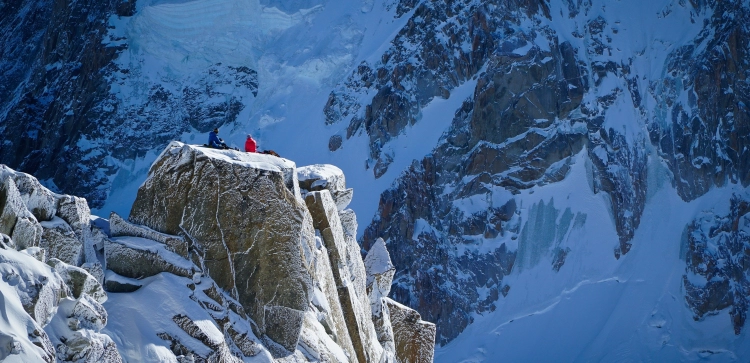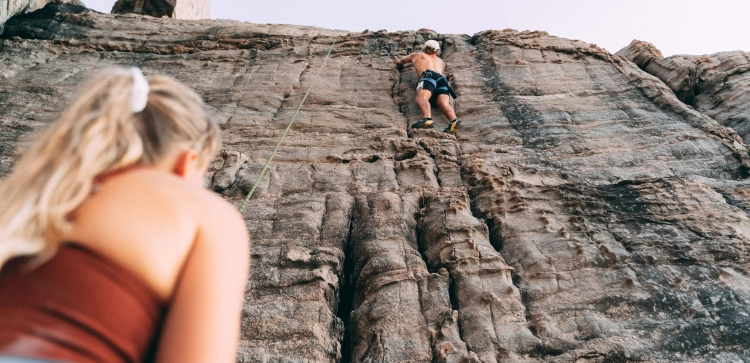Climbing Partnerships: Building Trust & Safety

In the vertical world of climbing, where every move can carry significant consequence, trust isn't just a desirable trait—it's the absolute foundation of every successful partnership. Whether you're belaying hundreds of feet off the ground, spotting a dynamic boulder problem, or navigating complex terrain, your reliance on your partner's decisions, competence, and reliability is paramount. This comprehensive guide will delve into the profound role of trust in climbing, exploring not only why it's essential but also providing actionable strategies on how to build, nurture, and sustain these crucial bonds, ensuring a safe, efficient, and deeply fulfilling climbing journey.
- The Indispensable Role Of Trust In Climbing Partnerships
- The Foundation Of Safety
- Enhancing Communication
- Fostering Efficiency And Performance
- Cultivating Camaraderie And A Fulfilling Journey
- How To Build Trust In Climbing Partnerships: Actionable Strategies
- Aligning Climbing Goals And Expectations
- Fostering Open And Honest Communication
- Demonstrating Reliability And Competence
- Collaborative Problem-Solving
- Nurturing Trust Beyond The Climb
- Sustaining Trust: Dealing With Challenges And Maintaining The Bond
- Conclusion
- FAQ: Building And Maintaining Trust In Climbing Partnerships
- Why Is Trust So Important In Climbing Partnerships?
- How Do You Build Trust With A New Climbing Partner?
- What Are Some Key Communication Tips For Climbing Partners?
- How Does Competence Relate To Trust In Climbing?
- What Should You Do If Trust Is Broken In A Climbing Partnership?
- Can You Climb Without Full Trust In Your Partner?
- How Do Shared Goals Impact Trust In Climbing?
The Indispensable Role of Trust in Climbing Partnerships
Trust forms the bedrock of every climbing partnership. It’s the invisible yet unbreakable tether that binds climbers together, ensuring safety, fostering effective communication, and ultimately paving the way for a more fulfilling and ambitious climbing journey. Without implicit trust, the inherent risks of climbing become insurmountable, and the joy of shared accomplishment diminishes.
The Foundation of Safety
At its core, trust in climbing is about safety. When you are high off the ground, your life quite literally rests in your partner’s hands. This profound reliance demands:
-
Confidence in Belaying: Knowing your belayer will react correctly, manage the rope, and catch your fall.
-
Sound Decision-Making: Believing your partner will make rational judgments about anchors, rope management, weather, and objective hazards.
-
Reliability in Spotting (Bouldering): Trusting a spotter to guide your fall safely onto crash pads.
-
Assurance of Gear Skills: Confidence that your partner properly uses and manages all climbing equipment.
Without this deep-seated trust in your partner’s competence and attentiveness, fear can easily override focus, making climbing dangerous and unenjoyable.
Enhancing Communication
Trust creates an environment where open and honest communication can flourish. When partners trust each other, they are more likely to:
-
Give Clear Instructions: Commands like "take," "slack," or "clipping" are understood and acted upon without hesitation.
-
Actively Listen: Pay close attention to verbal and non-verbal cues, anticipating needs and reacting promptly.
-
Provide Constructive Feedback: Offer insights on movement, technique, or belay practices in a supportive manner.
-
Express Concerns Openly: Feel comfortable voicing anxieties, fatigue, or doubts without judgment, allowing for adjustments to the plan.
This free flow of information prevents misunderstandings, ensures mutual understanding of the situation, and helps navigate challenges collaboratively.
Fostering Efficiency and Performance
Beyond safety, trust significantly boosts a climbing team's efficiency and performance:
-
Fluid Movement: A climber who trusts their belayer can move more confidently and smoothly, pushing their physical limits without the mental burden of doubt.
-
Shared Goals and Strategies: Partners who trust each other can align on objectives, whether it's a specific route, a training goal, or a multi-day expedition. They can openly discuss strategies and tactics.
-
Optimal Pace: Trust allows a team to establish an efficient rhythm, with each partner understanding the other's capabilities and pace on the rock.
-
Taking on Bigger Challenges: With a strong foundation of trust, partnerships can confidently attempt harder routes and more ambitious projects, knowing they have a reliable support system.
Cultivating Camaraderie and a Fulfilling Journey
Ultimately, trust deepens the personal connection between climbing partners, transforming a functional relationship into a true friendship.
-
Mutual Support: Beyond the climb, partners often become a source of encouragement, empathy, and shared experience.
-
Shared Vulnerability: Climbing often pushes individuals to their physical and mental limits, fostering a unique bond built on shared moments of vulnerability and triumph.
-
Long-Term Partnerships: The deepest, most enduring climbing partnerships are built on this foundation of mutual trust and respect, leading to years of shared adventures and growth.
How to Build Trust in Climbing Partnerships: Actionable Strategies
Building trust is a gradual process, earned through consistent actions and genuine commitment. It requires conscious effort both on and off the rock.
Aligning Climbing Goals and Expectations
Trust begins with clarity. Ensure both partners are on the same page regarding their objectives and aspirations:
-
Shared Ambitions: Discuss what you hope to achieve together. Are you aiming for a specific grade, a multi-pitch ascent, or just a casual day at the crag?
-
Mutual Understanding: Openly communicate your individual strengths, weaknesses, fears, and comfort zones. Respect each other's limits.
-
Define Roles and Responsibilities: On a route, clearly define who leads, who belays, who cleans, etc. This eliminates ambiguity and builds confidence.
Fostering Open and Honest Communication
Effective communication is the lifeblood of trust in climbing.
-
Clear Commands: Use standardized climbing commands (e.g., "Climb when ready," "Take," "Slack," "Falling!"). Practice them until they are second nature.
-
Active Listening: Pay full attention to your partner's verbal and non-verbal cues. If something feels off, or a command is unclear, ask for clarification immediately.
-
Constructive Feedback: Provide feedback on belaying, technique, or decision-making in a supportive, non-judgmental way. Frame it as "What if we tried..." or "I noticed..." rather than criticism.
-
Expressing Vulnerability: Feel safe to admit when you're scared, tired, or unsure. Acknowledging vulnerability builds empathy and strengthens the bond.
-
Pre-Climb Briefings: Before each pitch or difficult problem, briefly discuss the plan, potential hazards, and bailout options. This ensures mutual understanding.
Demonstrating Reliability and Competence
Actions speak louder than words in climbing. Consistently demonstrating reliability and competence is fundamental.
-
Master Your Skills: Continuously work on your own climbing and belaying skills. Be proficient in knots, anchor building, rope management, and rescue techniques relevant to your climbing style.
-
Be Attentive and Focused: When belaying, maintain constant vigilance. Avoid distractions. Your partner's life is in your hands.
-
Follow Safety Protocols: Adhere strictly to established safety procedures. Double-check knots, harnesses, and belay devices. Don't cut corners.
-
Consistency: Be consistent in your performance and attentiveness. Trust is built over time through repeated positive experiences.
Collaborative Problem-Solving
Climbing inherently involves overcoming challenges. How you tackle these together builds trust.
-
Brainstorming Beta: When stuck on a difficult section, work together to "read" the route and find solutions. Discuss different sequences, body positions, and hold choices.
-
Mutual Support on Redpoints/Projects: When one partner is "projecting" (working on a difficult climb over multiple attempts), the other's unwavering support, insightful beta, and patient belaying are invaluable.
-
Adapting to Challenges: Be adaptable when unforeseen circumstances arise (e.g., changing weather, a crowded crag, unexpected difficulty). Work as a team to adjust plans safely and effectively.
-
Learning from Mistakes: When mistakes happen, approach them constructively. Discuss what went wrong, how to prevent it in the future, and learn together without blame.
Nurturing Trust Beyond the Climb
Trust isn't confined to the rock; it's reinforced by the broader relationship.
-
Develop Personal Connections: Spend time together off the wall. Share personal stories, jokes, and experiences. Building a friendship outside of climbing deepens the bond.
-
Reflect on Shared Experiences: After a challenging or rewarding climb, talk about it. Discuss what went well, what was difficult, and what you learned. This shared reflection reinforces the partnership.
-
Mutual Support: Be a supportive friend in all aspects of life, not just climbing. This reciprocal support builds a deeper level of trust.
Sustaining Trust: Dealing with Challenges and Maintaining the Bond
Even the strongest partnerships will face challenges. Sustaining trust requires ongoing effort, adaptability, and a commitment to resolution.
Constructive Conflict Resolution
Disagreements or moments of lost confidence can arise. Addressing them constructively is vital.
-
Address Issues Directly and Calmly: Don't let frustrations fester. Address concerns promptly, but always in a calm, respectful, and private manner.
-
Focus on Behavior, Not Character: Instead of "You're always careless," try "When you did X, it made me feel Y because of Z."
-
Listen Actively: Understand your partner's perspective, even if you disagree.
-
Find Solutions Together: Work towards a resolution or a plan for preventing similar issues in the future.
-
Rebuild, Don't Destroy: The goal is always to strengthen the partnership, not to win an argument.
Adaptability and Growth
Climbers evolve, and so do partnerships.
-
Evolving Goals: As individual skills change, revisit and realign shared climbing goals.
-
Accepting Limitations: Understand that both partners will have good days and bad days, and acknowledge physical or mental limitations without judgment.
-
Continuous Learning: Maintain a shared commitment to learning new skills, improving techniques, and staying current with best practices.
Conclusion
Trust is the lifeblood of climbing partnerships. It transforms individual efforts into a cohesive, powerful, and deeply rewarding experience. By actively aligning goals, practicing open communication, consistently demonstrating reliability, collaboratively solving problems, and nurturing your bond both on and off the rock, you build a foundation of trust that not only ensures safety but also unlocks new levels of performance and camaraderie. Invest in your climbing partnerships, for the journey to the summit is always richer when shared with someone you truly trust.
FAQ: Building and Maintaining Trust in Climbing Partnerships
Why is trust so important in climbing partnerships?
Trust is fundamental in climbing partnerships because it directly impacts safety (relying on your partner for belaying, spotting, and sound decisions), enhances communication, fosters efficiency and performance, and builds deep camaraderie, making the climbing experience more fulfilling.
How do you build trust with a new climbing partner?
Building trust with a new partner involves: aligning climbing goals, practicing open and clear communication (especially climbing commands), consistently demonstrating reliability and competence in skills, collaboratively solving problems on routes, and nurturing the relationship both on and off the climb.
What are some key communication tips for climbing partners?
Key communication tips include using clear, standardized climbing commands, actively listening to your partner, being able to provide constructive feedback, and feeling comfortable enough to openly express any fears or concerns without judgment.
How does competence relate to trust in climbing?
Competence is directly linked to trust. A partner's demonstrated skill and proficiency in climbing techniques, knots, belaying, and safety protocols build confidence in their ability to protect you and make sound decisions, which is essential for trust.
What should you do if trust is broken in a climbing partnership?
If trust is broken, it's crucial to address the issue directly, calmly, and privately. Focus on the specific behavior, actively listen to your partner's perspective, work collaboratively to find a solution, and commit to rebuilding the trust through consistent positive actions over time.
Can you climb without full trust in your partner?
While you can climb with varying levels of trust, a lack of full trust significantly increases the mental burden and perceived risk, often leading to hesitation, reduced performance, and a less enjoyable experience. For challenging or high-consequence climbs, full trust is non-negotiable for safety.
How do shared goals impact trust in climbing?
Shared goals create a unified purpose within a climbing partnership. When partners align on objectives, expectations, and desired challenges, it fosters mutual understanding, reduces potential conflicts, and builds a stronger foundation of collaborative trust.















